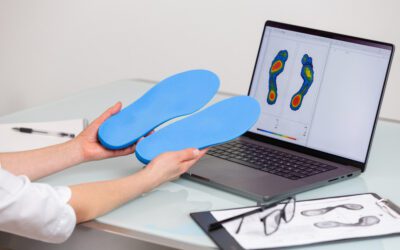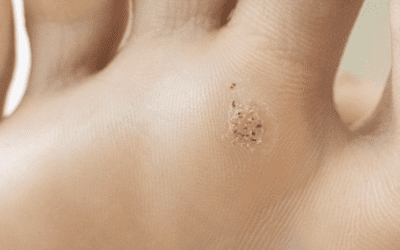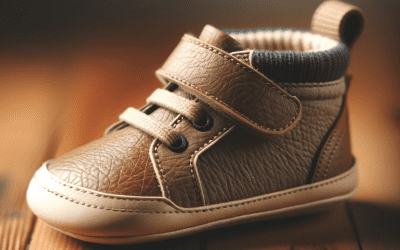The foot, a marvel of anatomical engineering, supports our body, allowing us to walk, run, and dance. However, despite its resilience, it is sometimes prone to various ailments, one of the most common in podiatric clinics being Morton’s neuroma. But what exactly is it?
History and Anatomy Morton’s Neuroma
Morton’s neuroma is not a recent discovery. It has long been known in the medical world. It’s a condition that involves the compression of an inter-digital nerve in the space between the metatarsal heads of the foot. Imagine a nerve trapped between two bony structures, causing pain and discomfort. Contrary to what its name might suggest, it is not a tumor, but rather a thickening of the medial plantar nerve.
Morton’s syndrome mainly manifests in the space between the third and fourth toes, though this can vary. The anatomy of the foot is complex, with its many bones, ligaments, and nerves. An inter metatarsal ligament can also be involved in this compression.
Epidemiology of Morton’s Neuroma
Despite its widespread prevalence, Morton’s neuroma is often misunderstood. According to various epidemiological studies, this condition affects women more than men, with a 4:1 ratio. People aged 40 to 60 are particularly prone to developing this pathology. While the exact reasons for this demographic distribution remain up for debate, factors such as wearing high heels are frequently cited, especially in women.
While narrow shoes and high heels are considered major risk factors, other elements can also exacerbate the situation. Sports activities requiring repetitive movements or excessive pressure on the forefoot, like running or ballet, can predispose individuals to the condition. Previous foot traumas or even certain rheumatic diseases can also be aggravating factors, making the foot more vulnerable to nerve compression.
Symptoms and Signs Morton’s Neuroma
The symptoms are quite characteristic. Patients often describe a burning or tingling sensation between the toes, which can evolve into sharper pain when walking or wearing narrow shoes. Sometimes, the progression of Morton’s neuroma leads to a loss of toe sensitivity or the feeling of having an “object” in the shoe. The pain can be exacerbated with the use of high heels or inappropriate footwear.
Genetics may play a role, but one of the main causes is wearing ill-fitting shoes. Narrow shoes or high heels can cause compression of the inter-digital nerve. Other factors such as hallux valgus feet, ingrown toenails, or plantar warts can also contribute to the onset of the syndrome. Athletes, due to repetitive stress on their feet, or individuals whose profession involves prolonged standing, are particularly at risk. Tendinopathies like rotator cuff disorders can also interact with the symptoms of the neuroma.
Comparison with Other Foot Pathologies
Morton’s neuroma is one among several podiatric conditions. For instance, bursitis is inflammation of the fluid cushions protecting the joints, while plantar fasciitis is inflammation of the tissue band extending under the foot. Hallux valgus, commonly called a “bunion”, is a deformation of the joint at the base of the big toe. Although these diseases can present similar foot pain symptoms, their etiology, location, and treatment differ significantly from Morton’s neuroma.
Morton’s Neuroma Evaluation by the Podiatrist
In a podiatric clinic, a thorough clinical examination is performed for diagnosis. The professional evaluates retro capital support, looks for pain from compression in the space between the metatarsal heads, and may conduct tests to differentiate this pathology from other conditions like plantar fasciitis or Lenoir’s spine.
The diagnosis of Morton’s neuroma is not solely based on clinical symptoms. Ultrasound is a commonly used tool to visualize the nerve thickening. MRI can also help distinguish this pathology from other potential causes of foot pain. Although X-rays don’t directly show the neuroma, they can be useful in ruling out other conditions like fractures or arthritis.
Treatment Morton’s Neuroma
The primary goal in treating Morton’s neuroma is pain relief. At home, rest and changing footwear can often help. Using orthopedic insoles or foot orthotics can also be beneficial. In the clinic, more intensive interventions may be recommended. Surgery is sometimes considered for more severe cases. Post-operative care is crucial to ensure proper recovery.
Beyond surgical interventions, several non-invasive treatments exist. Physiotherapy offers exercises and techniques to relieve pain and reduce inflammation. Corticosteroid injections can also be recommended to reduce inflammation and pain. Recently, shockwave therapy has gained popularity, using acoustic waves to stimulate healing. Cryotherapy, which uses extreme cold, is another option considered in some cases.
Cortisone Infiltrations
Cortisone infiltrations, also known as corticosteroid injections, are often used as treatment for many inflammatory conditions, including Morton’s neuroma. Cortisone is a powerful anti-inflammatory that can reduce inflammation around the nerve, thus relieving pain and swelling.
- Procedure: The injection is given directly into the painful area, usually under ultrasound guidance to ensure precision. Before the injection, the area is disinfected and sometimes locally anesthetized to reduce discomfort.
- Benefits: Many patients report rapid and significant relief after a cortisone shot. This can help avoid more invasive interventions and resume daily activities more quickly.
- Risks and Side Effects: Although generally safe, these injections can lead to side effects. Temporary increased pain, infections, skin atrophy, discoloration, or tendinitis are among the possible, albeit rare, complications.
- Frequency: It’s important to note that the number of cortisone injections should be limited, as repeated shots can weaken surrounding tissues and increase the risk of complications.
Foot Orthotics
Foot orthotics are custom-made or prefabricated devices designed to be worn inside shoes. They provide proper foot support and alignment, correcting biomechanical anomalies and redistributing pressure to relieve pain.
- Design: Foot orthotics are custom-made based on the shape and biomechanics of the patient’s foot. This usually involves a comprehensive podiatric evaluation, which may include foot impressions, measurements, and sometimes gait analysis.
- Benefits: For patients with Morton’s neuroma, orthotics can help reduce pressure on the affected nerve, providing a specific cushion or depression. They can also correct other foot issues contributing to the pathology, like flat feet or misalignment.
- Lifespan and Maintenance: Foot orthotics are typically durable, but it’s essential to check them regularly to ensure they still offer adequate support. Patients should also clean them regularly and use them in suitable shoes.
- Alternatives and Adaptations: Besides traditional foot orthotics, metatarsal pads and other aids can be used to relieve pressure on Morton’s neuroma.
Daily Tips
Living with Morton’s neuroma requires some adaptations. Choosing shoes with a wide toe area and adequate support is vital. Metatarsal pads can also help distribute pressure more evenly. Regularly performing targeted stretches and exercises can help reduce symptoms. Avoiding high-impact activities and favoring swimming or cycling can also assist in managing the condition.
Prevention from an early age is critical. Children and teenagers are in their growth phase, and their feet are especially vulnerable to traumas and deformities. Choosing well-fitted shoes offering proper support is essential. Young athletes should be informed of the risks associated with certain practices and be encouraged to alternate activity types to reduce strain on their feet.
In short, prevention is based on education. Making informed shoe choices, avoiding prolonged wear of high heels, using adapted insoles – these are all essential tips to prevent the onset of the neuroma.
In Conclusion
Morton’s neuroma, despite its somewhat mysterious name, is nothing more than a well-known foot pathology among podiatrists. Understanding the symptoms, causes, and available treatments is crucial for preventing and managing this condition. Keeping in mind the importance of prevention and making informed footwear choices, we can all walk towards a pain-free future.



